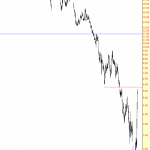Over the past decade, in the wake of the 2008-09 debt crisis, the impossible has happened. The sickness of too much debt has been seemingly cured with massive dosages of even more debt. This, no doubt, is evidence that there are wonders and miracles above and beyond 24-hour home deliveries of Taco Bell via DoorDash.
But how can dosages of more debt be the cure for too much debt? Can more Cutty Sark be the cure for a dipsomaniac? Certainly, in both instances, and after some interim relief, the cure always proves to be much worse than the disease.
Without question, a moment of clarity is approaching that will bisect the world of today from the world of tomorrow, like the Patriot Act bisects the present world from its prior state of bliss. Thus, what follows is a rudimentary preview of what’s in store. But first, some context is in order…
The fake money system – a system centered on debt based legal tender and centrally fabricated interest rates – produces booms and busts of greater extremes with each progression of the business cycle. This century alone we’ve experienced two iterations of these boom and bust scenarios. First the dotcom bubble and bust. Then the housing boom and crash.
Make no mistake, these booms and busts were anything but garden variety gyrations of the business cycle. In fact, the Federal Reserve’s fingerprints are all over them. The booms originated from Fed monetary policy misadventures. The busts were triggered by Fed monetary policy mishaps.
Anatomy of a Mishap
Presently, we’re closing in on a decade’s long economic boom and bull market in stocks. This boom, like the boom of the mid-2000s, advanced during an extended period of monetary policy misadventures. This was the ZIRP and QE misadventure from 2009 through 2015, which distorted financial markets and disfigured the economy.
The last several years of this boom and bull market, however, have been a monetary policy transition period. First, the Fed tapered back QE. Then the Fed began ever so slightly reducing its balance sheet and raising the federal funds rate.








Leave A Comment